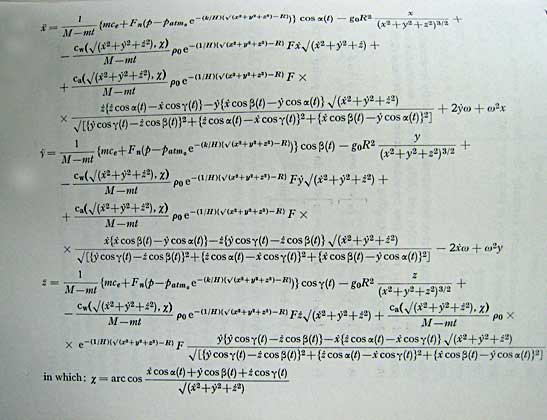You are using an out of date browser. It may not display this or other websites correctly.
You should upgrade or use an alternative browser.
You should upgrade or use an alternative browser.
Working out Amps?
- Thread starter Mike2007
- Start date
Sponsored Links
That reminds me of a time, in my mispent youth, when I tried to get my head around the maths of some of Einstein's original papers. What appeared to be relatively straightforward equations in the text took on a whole new complexion when one discovered that some of the innocent looking symbols (he ran out of Greek characters, so used Russian and other ones as well) actually referred to an expression which occupied several pages of an Appendix! At that stage, I decided that I was never going to get my head around 'the workings', and therefore only paid attention to his 'answers'No. But this is:....It's not rocket science.
Kind Regards, John.
I think we all know thatThe original post asked the simplest question. Step 1 in a cable calc shows the calculation. See first answer. It's not rocket science.
Kind Regards, John.
So why not just tell Mike this how to do it and leave the rest out?
It's amazing how we don't hoses burting into flames with the massive overloading of cables we have in this country.
Some discussions can be of intellectual interest even when unrelated to the original topic which spawned them. Posts about posts virtually never come into that category!So why not just tell Mike this how to do it and leave the rest out?
Kind Regards, John.
Sponsored Links
That shows that electrical engineers are vastly superior to rocket scientists.
Take a look at Maxwell's Equations which underpin electrical engineering. Indeed, Maxwell's equations are to electrical engineers what Ohm's law is to electricians. Anyone who considers himself an electrical engineer should know and understand Maxwell's equations.
Unlike the Rocket scientists' equations which are inelegant overlong but mere straightforwardly algebraic, Maxwell's involve the partial differentiation of vectors. They are also vastly more elegant.
I'll explain the first equation: The divergence of the electric field E (a vector) equals the charge density ρ divided by the permittivity of space εo.
And the second one states that the divergence of a magnetic field is zero - at least until somebody discovers a magnetic monopole. 


The third one states that a varying magnetic field creates an electric field. Faraday knew that already.
It's the fourth one that was his own stroke of genius because he realized that a varying electric field would create a magnetic field, even though he didn't have the means to measure it.


What's more, you can use those equations to calculate the speed of an electromagnetic wave. I can't figure out how to make the symbols come out right but --
c = 1/sqrt(mu0.epsilon0).
Pretty neat huh!


The third one states that a varying magnetic field creates an electric field. Faraday knew that already.
It's the fourth one that was his own stroke of genius because he realized that a varying electric field would create a magnetic field, even though he didn't have the means to measure it.
What's more, you can use those equations to calculate the speed of an electromagnetic wave. I can't figure out how to make the symbols come out right but --
c = 1/sqrt(mu0.epsilon0).
Pretty neat huh!
Yup, strange things happen when div.B does not equal 0And the second one states that the divergence of a magnetic field is zero - at least until somebody discovers a magnetic monopole.


Click for div.b<>0
That's a horseshoe magnet, not a monopole. Great video though. 


PS: Is that a monatomic hydrogen magnet or does it have one of Iron Man's transistors in it?


PS: Is that a monatomic hydrogen magnet or does it have one of Iron Man's transistors in it?
DIYnot Local
Staff member
If you need to find a tradesperson to get your job done, please try our local search below, or if you are doing it yourself you can find suppliers local to you.
Select the supplier or trade you require, enter your location to begin your search.
Please select a service and enter a location to continue...
Are you a trade or supplier? You can create your listing free at DIYnot Local
Sponsored Links
Similar threads
- Replies
- 5
- Views
- 947
S



